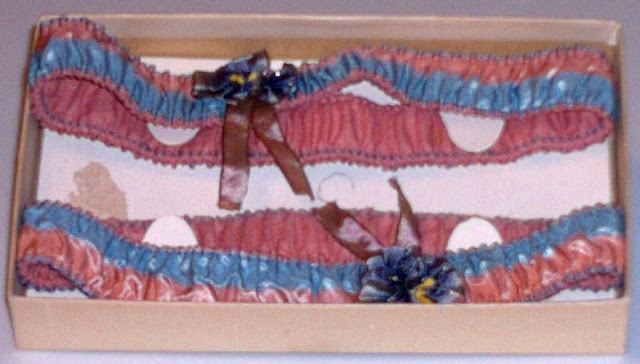I found these little pieces of history at a recent estate sale and got a musty trip back to the early 1960's. Come along with me now to the time when Early American was stylish, but getting it's butt beat by mid-century modern in the suburbs.
Here is a furniture brochure from Noren Colonial Furniture in Waukegan, IL (or Ill. as it was called before the two-letter abbreviations).
No, there isn't!

Don't we all have pictures in our albums featuring people sitting in these?
Next up is a series of advertising/informative booklets sent out by a local builder showcasing his homes and combining that with style tips, called
Better Living in Lake County. I guess the people I bought these from were from Waukegan.
This first pic is scary for me. As my parents' last retirement home a few years ago, they purchased a pristine 1959 split-level in what used to be THE place to live in town. They also purchased a lot of the furniture, which was also original (even the Stereo!). It's like stepping back in time. This picture is almost exactly like the addition someone put on my mom's home shortly after it was built. An entire wall devoted to fireplace and grilling indoors, just like our early American ancestors had to do, but theirs no longer works for some reason. (Gas hookup.)
A new concept was the family room, where that new-fangled tv didn't clash with the spinning wheel and ox-yoke chandeliers upstairs.

I bet that floor is cold.
This booklet goes on and talks about gay floors, baseboard radiators, stainless-steel kitchens, and indoor planter boxes. Oh, and did you know that those who like the color purple are usually charming, artistic and inventive, but seldom practical? Tell that to Oprah.
Here is Mommy making dinner with her high heels on. I can't see if she is wearing pearls, but she does have on an apron. Gotta look good for the bread-winner!

Moving along to 1961, we still can't quite shake the colonial decorating.

Although we are getting swishy in the bedroom,

and Brady on the stairs.

By 1963 we're getting all cheesy-Japaneezy.
There are articles about nailing or gluing crap to your garage door to make it "distinctive", keeping your sewing room neat, more indoor planters with attached screens, and making "cozy" seating areas.

Tell me the truth, now. Doesn't that upper right one look like a dungeon?
My favorite article explains how to get all the housework done and still have time for "you" before taking a nap and bath and making dinner.
Next up is a series of the same kind of booklet, but from the local bank, instead. These are more interesting and cover more topics, like jokes, cooking, home improvement, MONEY, and gardening.
Here's our lovely homeowners now.

Dreaming of this.

Note the innovative use of glass block and the ugly fountain/sculpture in the front yard.
A garage taking up half the house and a giant barbeque in the back yard! Wonderful use of found objects creates a japanesque feel to the patio.
Large wrap-around windows and a well-lighted basement.
I made this lovely home with the Block City set, shown here. I didn't want to cut the vintage "roofing material" so made my own.
Our homemaker spends her time making cheezy crap to decorate her home like this.
And when hubby comes home they eat this.
I'm really liking that brownie recipe!
Lastly, here's something that was bothering people in April of 1963 - the switch to 7 digit phone numbers.

I'm not going through the rest of them because I'm getting tired of the '60's and need a break. I have a few more books and a Yield House catalog from 1965, too.
All these booklets and the Block City toy will be listed at my Etsy store.



























































